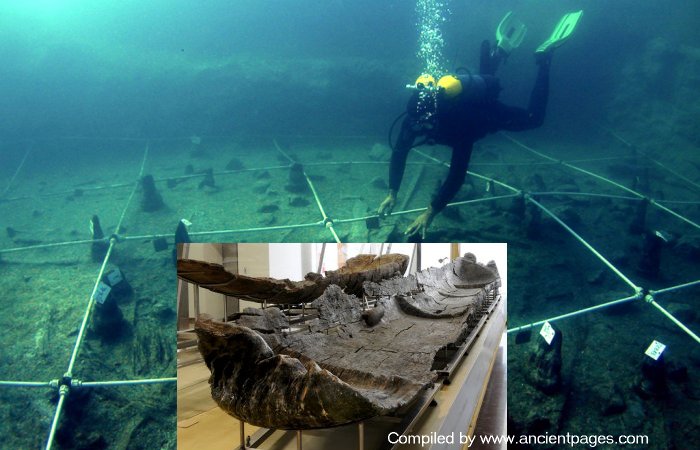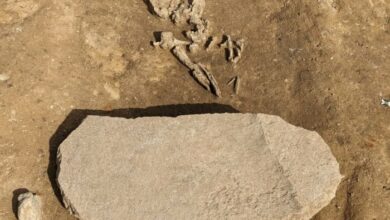Neolithic Boats At La Marmotta Reveal People Used Advanced Nautical Technology 7,000 Years Ago

Jan Bartek- AncientPages.com – Scientists have found evidence people navigated the Mediterranean Sea using technologically sophisticated boats about 7,000 years ago.
A recent research conducted by Juan F. Gibaja and his team from the Spanish National Research Council, Barcelona, has shed new light on the evolution of seafaring technology. Their study focused on the analysis of canoes found at La Marmotta, a Neolithic lakeshore village near Rome, Italy.
Excavation of Canoe 5. Credit: PLOS ONE (2024). DOI: 10.1371/journal.pone.0299765
During previous studies, underwater archaeologists discovered rare, well-preserved cloth fragments, dwellings, baskets, sword weaving, and much more at the submerged La Marmotta settlement.
This new research of La Marmotta offers valuable insights into our understanding of early maritime history.
Several of the most significant civilizations in Europe trace their origins back to the Mediterranean Sea’s coastlines. Archaeological records, including watercraft and coastal and island settlements, show that communities actively engaged in maritime travel and trade during the Neolithic era.
Archaeological investigations conducted at La Marmotta have led to the discovery of five dugout canoes, which are essentially boats crafted from hollowed-out trees. These artifacts date back to a period between 5,700 and 5,100 B.C. Upon examination, it was found that these boats were constructed using four distinct types of wood – a characteristic not commonly observed in comparable sites. Moreover, they exhibited sophisticated construction methods, such as the use of transverse reinforcements.
The canoe in question is linked with three T-shaped wooden pieces, each featuring a series of holes that were presumably used for securing ropes attached to sails or other maritime components. These characteristics, coupled with past reconstruction experiments, suggest that these were vessels capable of sea travel. This hypothesis is further backed by the discovery of stone tools at the site that are associated with adjacent islands.
Canoe Marmotta 2. On display in the Museo delle Civiltà in Rome. Credit: PLOS ONE (2024). DOI: 10.1371/journal.pone.0299765
The research team has identified these canoes as outstanding examples of prehistoric boats. Their construction necessitated an intricate knowledge of structural design and the characteristics of wood, along with a well-coordinated specialized workforce. The resemblance between these canoes and later maritime technologies substantiates the theory that numerous significant advancements in sailing were made during the early Neolithic period.
“Direct dating of Neolithic canoes from La Marmotta reveals them to be the oldest in the Mediterranean, offering invaluable insights into Neolithic navigation. This study reveals the amazing technological sophistication of early agricultural and pastoral communities, highlighting their woodworking skills and the construction of complex vessels,” the scientists write in their study.
Canoe Marmotta 1. On display in the Museo delle Civiltà in Rome. Credit: PLOS ONE (2024). DOI: 10.1371/journal.pone.0299765
Scientists are hopeful there are more boats preserved near La Marmotta.
“La Marmotta is causing a literal sea change in our view of those first Neolithic farming groups. It was always difficult to understand how they could have traveled around all of Mediterranean Europe. The Marmotta canoes are not only outstanding evidence of how they achieved that but also an example of the complexity of those societies from the viewpoint of their social and technical organization. These dugouts and the other elements associated with them represent the knowledge and experience accumulated over centuries and the practical skills of those groups to make them.
It is only in this way that we can understand how they crossed the Mediterranean Sea and occupied the coasts of Europe and Africa in the space of a few centuries. In the lands where they settled, they introduced their new economic model based on domestic plant and animal species,” the scientists concluded in their paper.
The study was published in the journal PLoS ONE







